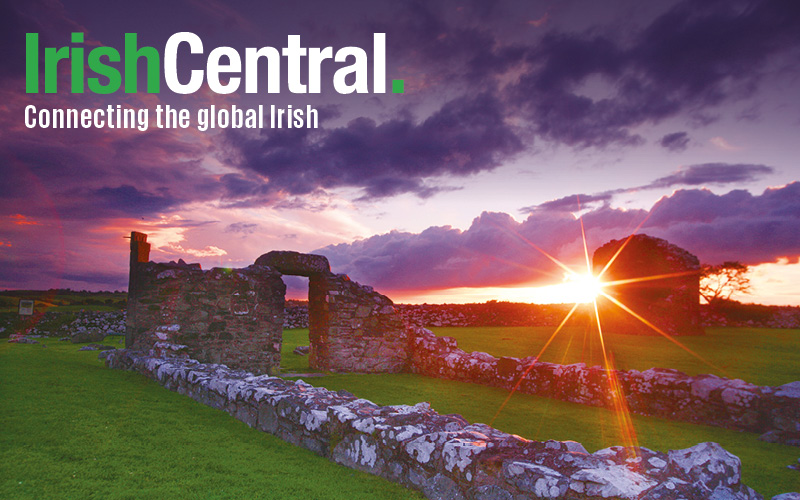Nothing makes a hard road seem easier than a good friend to walk it with you and the Native Americans have certainly acted as a solid companion to the Irish when things were at their toughest.
Loretta Lynde is an Irish descendant living on the Crow Reservation in Montana. Her family lived on the reservation since the mid-1800s and she has maintained her Irish identity as well as being immersed daily in Crowe culture.
Speaking to Indian Country Today Media Network, Lynde felt that this put her in the perfect position to compare the two cultures and she noticed striking similarities in the experiences of the two peoples. We take a look at some of her observances and suggest a few of our own.
British Occupation
Both victims of British colonization and both suffered from hunger, genocide, and diseases as a result. Both peoples also walked a Trail of Sorrow that resulted in many deaths of their people.
Native American tribes who were forced off their land by President Andrew Jackson (the son of Irish immigrants) and forced to complete a 500-mile trek to Oklahoma that would become known as the Trail of Tears. Despite the allegiance shown by the Choctaws to General Jackson during the War of 1812, the Treaty of Dancing Rabbit Creek signed on September 27, 1830, resulted in the Choctaws signing away the remainder of their traditional homelands in Alabama, Mississippi, and Florida and undertaking a forced march off the land. Over half the 21,000 Choctaws forced on this march perished on the trail due to malnutrition, disease, and exposure. The winter the Choctaws spent on the Trail of Tears was one of the coldest on record and even those who survived the journey to Oklahoma faced further hardships in creating new communities for themselves, along with new homes, schools, and churches.
Sixteen years after this, in 1847 or Black ‘47, the worst year of the Irish famine, starving people in Louisbourough, Co. Mayo, were told to go to the Poor Relief in the hopes of getting food. When they discovered that Poor Relief officers were not there, they took a desperate 15-mile walk to the home of the landlord to beg for food. Having been turned away from the house for disturbing the landlord’s lunch, many died on the return journey, some with grass in their mouths from attempts to stave off hunger.
Generosity
When times are tough, we’ve got your back. The Irish and Native Americans are both very generous people and there’s no greater act of kindness between the two peoples than the money raised by Choctaw Indians in the 1840s to help the starving Irish during the famine. Despite the oppression faced by the Choctaws in the years preceding the famine, in 1847, on hearing of the plight and hunger of the Irish people, they raised $170 to send to Ireland and ease their suffering. This figure is equivalent to tens of thousands of dollars in today’s currency. A sculpture is due to be installed in Midleton, Co. Cork, to honor this spectacular display of kindness.
Not to be outdone, the Irish are famous for their charity work (thanks, Bono!) and in 2014, we ranked fourth in the World Giving Index of most charitable countries.
Gift of the gab
Both communities were originally focused on an oral tradition. Even the Irish word for folklore “Béaloideas” (Bale-id-us) can be directly translated as the education of the mouth. Irish music and stories were passed on through word of mouth and stories and tunes were learned by ear by roaming harpists and the honorable scéalaí (storyteller). Native Americans share our passion for a story and used stories about the Great Spirit to explain the world around them. These too were never traditionally written down.
Old traditions die hard
Despite attempts to destroy our culture, traditions, and language, both Irish and Native Americans share a passion and dedication to upholding our old traditions. Lynde even mentions that Crowe is seeing more pow wows in recent years.
Irish Mammies
Mothers rule the roost in an Irish household and the same could be said for Native Americans. Both have strong female representation throughout history and folklore and the importance of both women and men in society is understood.
Running late
It’s a well-known fact that Irish punctuality does not exist. On the up side, you can never truly be late when a starting time is very much only a ball-park figure. According to Lynde, Native American culture is just as laid-back about being on time as we are.
Nature lovers
Two peoples in touch with the land on which they live, Ireland a country were historically most people lived straight off the land they farmed. Irish folklore is full of cures and treatments using plants and stories about the birds and animals that share our countryside. A common theme in Native American stories is also the link between the people and the land and many of their traditions hold reverence for the land, too.
Stereotyped
Irish and Native Americans both fall foul of the annoying human desire to tar groups of people with the same brush. Katie Kane is a professor of the Colonial Studies Program at the University of Montana and she also believes in the similarities between Irish and Native Americans. Both communities and their tribal, indigenous lifestyles threatened the British and the style of living they had established and so they were treated as savages. Kane comments “The Irish were assumed to be lower on the tree of racial hierarchy in the 19th century. They were considered to be racially other.”
Are there any other ways in which our two communities are similar? Leave your thoughts in the comments section below.
H/T: Indian Country Today Media Network.




Comments